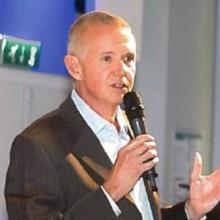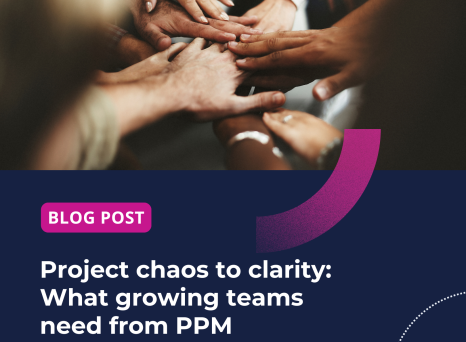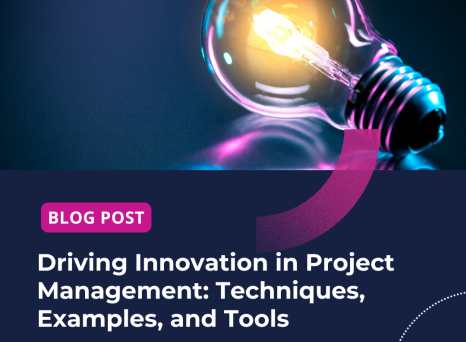Imagine for a moment that you are part of the Project Steering Committee. What questions would you need to ask the project manager as well as what questions should you ask to add value to the process? The thing is, if you aren't trained as a project manager—or don't come naturally hard-wired with a project manager's mindset—you likely don't know where to start or how best to contribute. Fortunately, you've come to the right place. Here, we've provided a cheat sheet for asking the right questions before launching any new projects.
Just because you manage projects—or are responsible for certain aspects of projects—doesn't automatically make you a professional project manager. In fact, it can give you a false sense of security around the status of your projects. But you must ask yourself, do you really understand how to evaluate a project's progress, risks, operating environment, and challenges?
To ensure your project's success, here are the nine questions to ask to identify the areas of improvement or the clarifications that need to be made before your next project review.
The right questions to ask when kicking off a new project
This is not an exhaustive list by any means, but if you ask these questions, you and your team will be in a much better position to drive a project's long-term success. Here's what to ask:
1. Have you cast the right people for your project?
Projects are rarely carried out alone. In fact, so-called ‘human costs' typically make up a big part of any project. This includes time and effort, personal investment, ongoing training, and managing relationships. That's why it's so critical to choose the right people to build your team.
Assembling the right team isn't simply about putting people with the right technical skills together, but more about assessing how well those people can work together. Failing to create a happy balance between a team's combined hard and soft skills can quickly derail a project before any work is ever delivered.
2. Who are you key stakeholders and how does the project affect them?
A big part of seeing through any project is getting stakeholder buy-in and support. Failing to do so will make it very hard to achieve your team's project goals. However, it's important to keep in mind that many of these stakeholders will likely be people outside of your project team—and not necessarily obvious stakeholders from the very start. They could be indirectly affected by your project (i.e. the end-users of your project deliverables) just as much as they could play an active and critical role in providing the necessary resources to build and carry out your projects.
Additionally, you may want to consider adding a handful of “experts” to your stakeholder list. These are the people who can contribute insightful feedback throughout the life of a project as well as the teams and organizations that can ultimately help you deploy the final product.
It is critical that you identify all of your project's stakeholders and also clearly understand their motivations, the potential impact (good or bad) they can have on a project, and their expected contributions. Some stakeholders are much more invested and ‘hands-on' while others prefer to play the role of ‘occasional contributor.' Either way, you need to ask yourself the following:
- How do you plan to engage stakeholders throughout the life of a project?
- Do they understand the benefits of the project and how it will impact them?
- Have you simply consulted them for input or have you truly made them feel involved?
- Will they ultimately become supporters or detractors of your project's success?
3. How did you estimate total project effort?
Oftentimes, teams tend to understand the time, effort, and personal investment a project will require. This is perfectly normal and nothing out of the ordinary. When you truly care about a project, you don't necessarily think about all the hard work that will need to go into it. Even so, you must take a step back to understand the full scope of your project. What must happen to get your project off the ground? How have you estimated time and effort—and how can you be assured that those estimates are accurate? Have you identified all of the tasks required?
Truth be told, there are as many good as there are bad ways to estimate time and effort. If your estimates are overly vague or very rough, be sure to take the time to dig into them a bit more—until you feel confident they are truly reliable. Also, be sure to question your calculation methods and the metrics you'll use to measure time and effort throughout your project's duration. You will be responsible for executing your projects on-time using the resources allocated, so your estimates and tracking methods need to be accurate.
4. What is the project's critical path?
You must have a clear understanding of what it will take for a project to go from start-to-finish. Have you identified the critical path for a project's tasks? What are the key milestones along that path? What are the dependencies between tasks? Why have you sequenced the tasks in this way? How much time, effort, and resources will go into completing each task?
As with estimating your project's effort, it's important to put a significant amount of thought into building your project's schedule. At the end of the day, you need to be able to answer this question: If the tasks get completely out of control, will that jeopardize the project's life?
5. What's not included in the project plan?
Equally as important as number 4 above, you need to be aware of the external activities, deliverables, and dependencies that matter to the success of your project. Not only can overlooking this be the source of steep financial risks (i.e. unbudgeted expenses), but it can also lead to delays, especially when specific resources shared across several projects are unavailable when you need them most.
Even worse is failing to consider the impact your project will ultimately have with regards to change management. Therefore, you must take into account the time and resources needed to analyse, understand, and address end-user needs as well as communicate project status with them regularly. In many cases, this kind of oversight can alienate end-users from the process, leading them to reject parts of a project and, thus, risking the project to fail in its entirety.
6. What are a project's major risks in terms of time and costs?
Successful projects face just as many obstacles as those that fail. What distinguishes a ‘success' from a ‘failure' is that successful project teams anticipate problems, plan their responses, and allocate budgets and resources in advance in order to deal with issues as they arise.
In addition, you have to think beyond the obvious risks and ask yourself the following questions:
- What are the signs that a risk may or will materialize?
- Will the project team have enough time to act on it and reduce potential consequences?
- What is the plan for mitigating these risks early on?
7. How will you keep track of your project's progress?
Based on how you have decided to estimate time and effort (see number 3 above), you should have already identified the right metrics for tracking actuals vs. the estimate to complete objectively. Keeping tabs on project costs should be a part of this even though these metrics alone don't tell the full story; they must be evaluated in the context of project completion. For example, if you've spent 60% of your budget but have only accomplished 20% of project tasks, there's a big problem.
As the manager of any given project, you should be able to provide details about your project's progress at any time. This includes being able to identify which milestones have been achieved, what deliverables have been rolled out, what deadlines are approaching, and well beyond.
8. When is the project really done?
Or as the Agile saying goes, “What is your definition of done?” Completing a project is not simply about delivering the right (or anticipated) deliverables at the right time. It's about deploying a solution that can realistically offer long-term value. In other words, a project must stand the test of time, otherwise all that effort could very well end up being all for nothing. Even so, from a purely project management standpoint, all projects have a “start” and “end” point.
9. How can you shorten the project timeline without impacting the end result?
Sometimes, circumstances require you to shorten a project's duration by 25% or eliminate 10% of project tasks—all without changing the project's overall scope. To do so, you'll need to make some thoughtful trade-offs in terms of budget, resources, and project deliverables. Either way, asking this question before someone asks you forces you to identify what it will take to deliver maximum value faster, without risking your broader goals. In Agile terms, this is what you'd call your path to the MVP, or Minimum Viable Product.
There are benefits of applying this approach to your own projects
Throughout your career, you'll have many opportunities to increase your responsibilities and develop your hard and soft skills. There will also inevitably come a time when you'll be asked to join a Project Steering Committee. And when you get that call, you'll already be equipped with the right questions to ask, in order to ensure you can always contribute meaningful value as you see a project through. As an added perk, your project manager will thank you!





